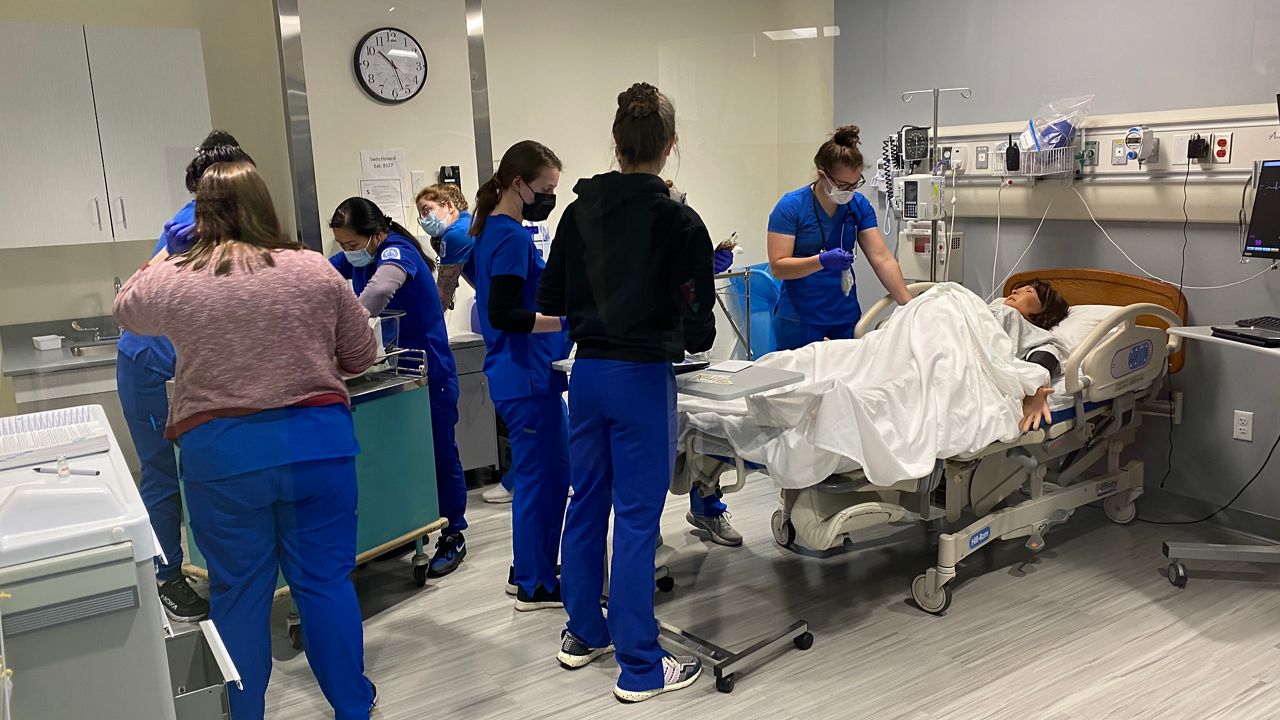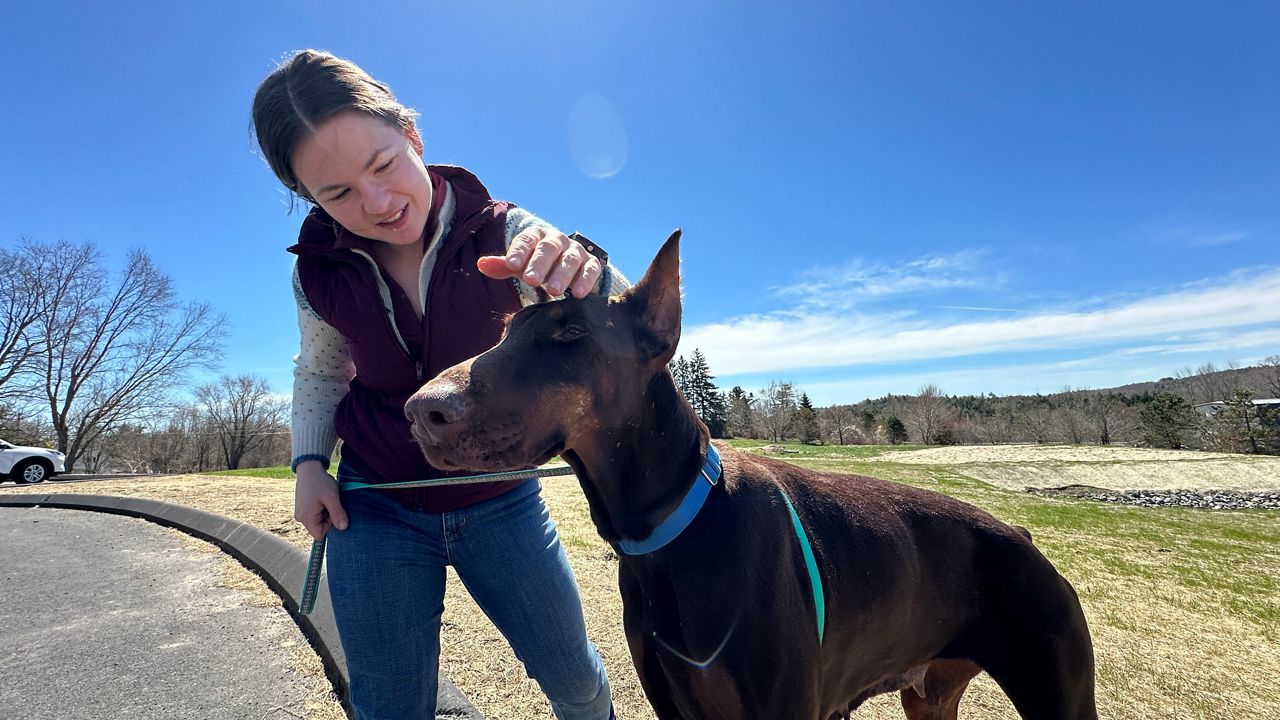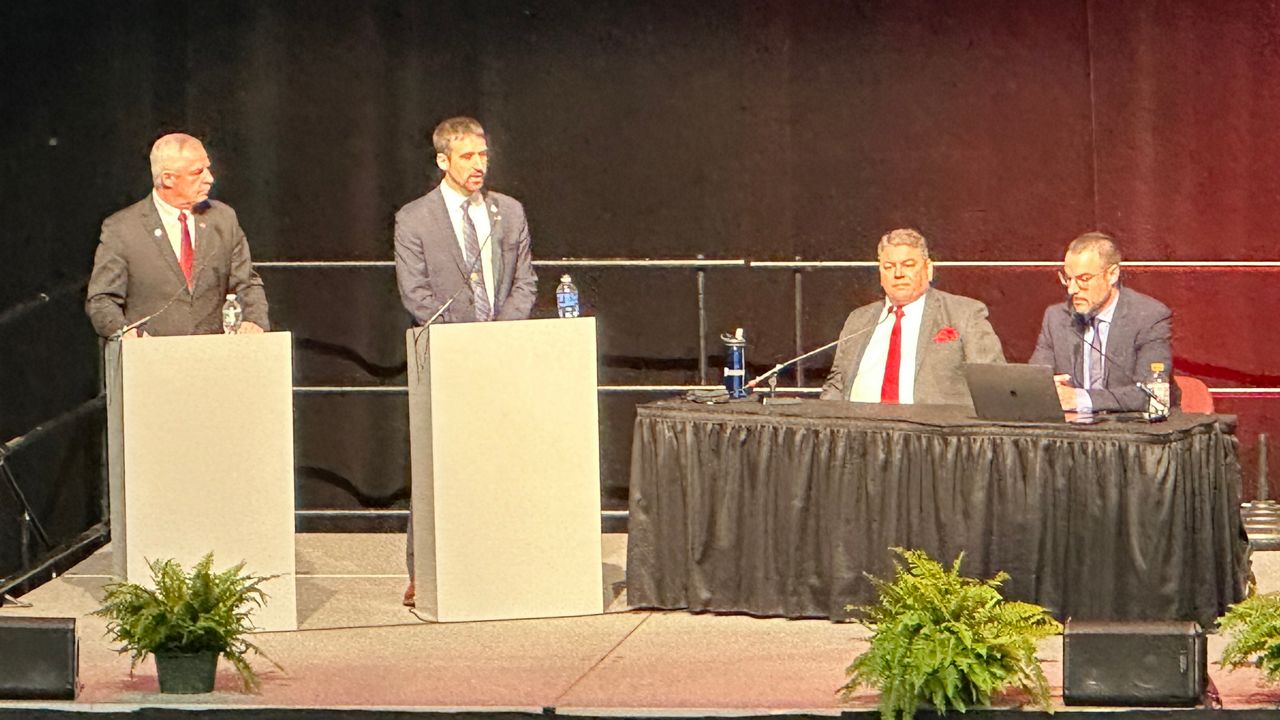The public got its first look at a new $2.5 million simulation center for nursing students at the University of Southern Maine’s Portland campus Tuesday.
Dr. Jeremy Qualls, dean of the college of science, technology and health, said Maine has a shortage of nurses, losing 10-15% of its nurse workforce during the coronavirus pandemic due to burnout.
“The urgency for health care, it’s really there,” he said.
Qualls said the state will need an estimated 2,000 new nurses by 2025. The new center, he said, is a component of the university helping to meet that demand.
“The stage is set for growth,” he said. “We need to.”
The Boyne Family Advanced Simulation and Interprofessional Education Center, housed in the campus’ science building, has 6,000 square feet of space on two floors.
The center includes advanced animatronic “patients” that students can work with. The animatronics contain sensors that simulate heart rates, respiration and other functions.
One lab looked very similar to a modern hospital room, with hospital-grade IVs, monitors and other equipment. In the hospital bed, an animatronic pregnant woman’s chest rose and fell while technicians explained how it worked.
“They’re incredibly complex,” said Gavin Blair, the lab’s manager.
The labs are monitored by technicians in a nearby control room. The technicians can even speak to the students, simulating the animatronic patient’s “voice.”
Dr. Michael Nozdrovicky works at MaineHealth as senior director of academic affairs and workforce development for nursing and allied health. A simulated hospital room, he said, with a simulated patient, is easier for students to work with. They can slow down, even stopping the simulation to ask questions.
“It decreases the stress on students, and makes the learning environment more comfortable,” he said.
Danica Brassbridge, 26, is a senior, graduating from the school’s nursing program in two weeks. She said the simulations can’t replace in-person clinical work, but simulators can create crisis situations, such as a patient’s heart stopping, in an environment where the students have more time to think about what to do.
“You don’t want your first experience to be with an actual patient with that,” she said.
The lack of actual lives at stake during the simulations, Brassbridge said, takes the anxiety out of the learning process.
“It does make a difference,” she said.
Qualls also showed off a simulation of a studio apartment, complete with appliances, bed and bathroom. Again, the space is monitored, and provides a place for students to practice home health aid work.
Qualls said faculty and the school’s theater majors are brought in to play the roles of patients and their loved ones. The students can simulate everything from occupational therapy to social work to working with dementia patients.
“That’s the power of the space,” he said. “You can tailor it.”
There are also several exam rooms, which are near-exact replicas of actual exam rooms at clinics and health care centers, right down to containers mounted on the walls with biohazard symbols for disposal of hypodermic needles. Students, working once again with actors, can practice performing basic examinations in the rooms.
For those studying athletic training, the center includes an athletic training room, which uses a combination of animatronics and actors to simulate patients for the students to evaluate. The room contained equipment such as floor mats and pads, dumbbells and even football helmets.
“It’s totally functional,” said Dominique Ross, the school’s athletic training program director. “It can be used as a clinic.”
The Boyne family donated $1 million to the center’s construction. Another $1.5 million came from the Maine legislature in 2018, part of a larger investment in the University.









)